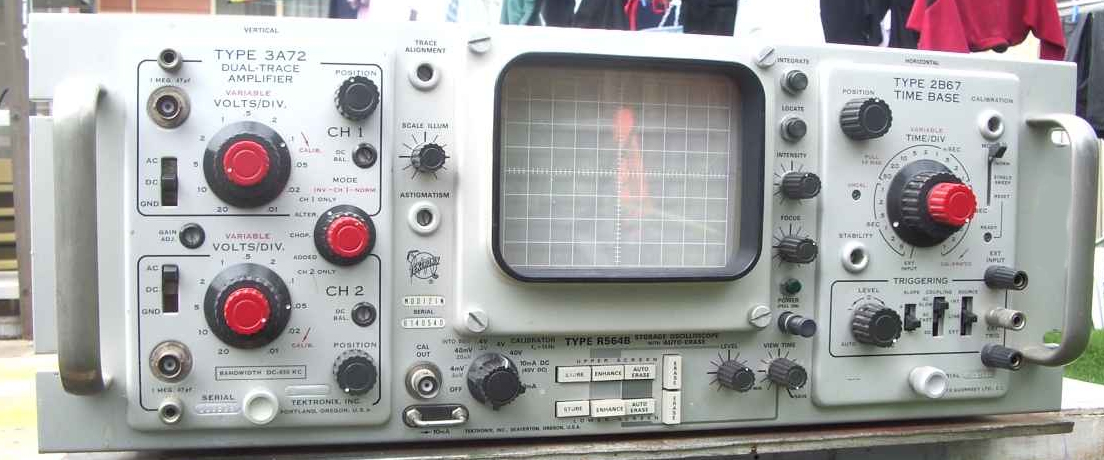
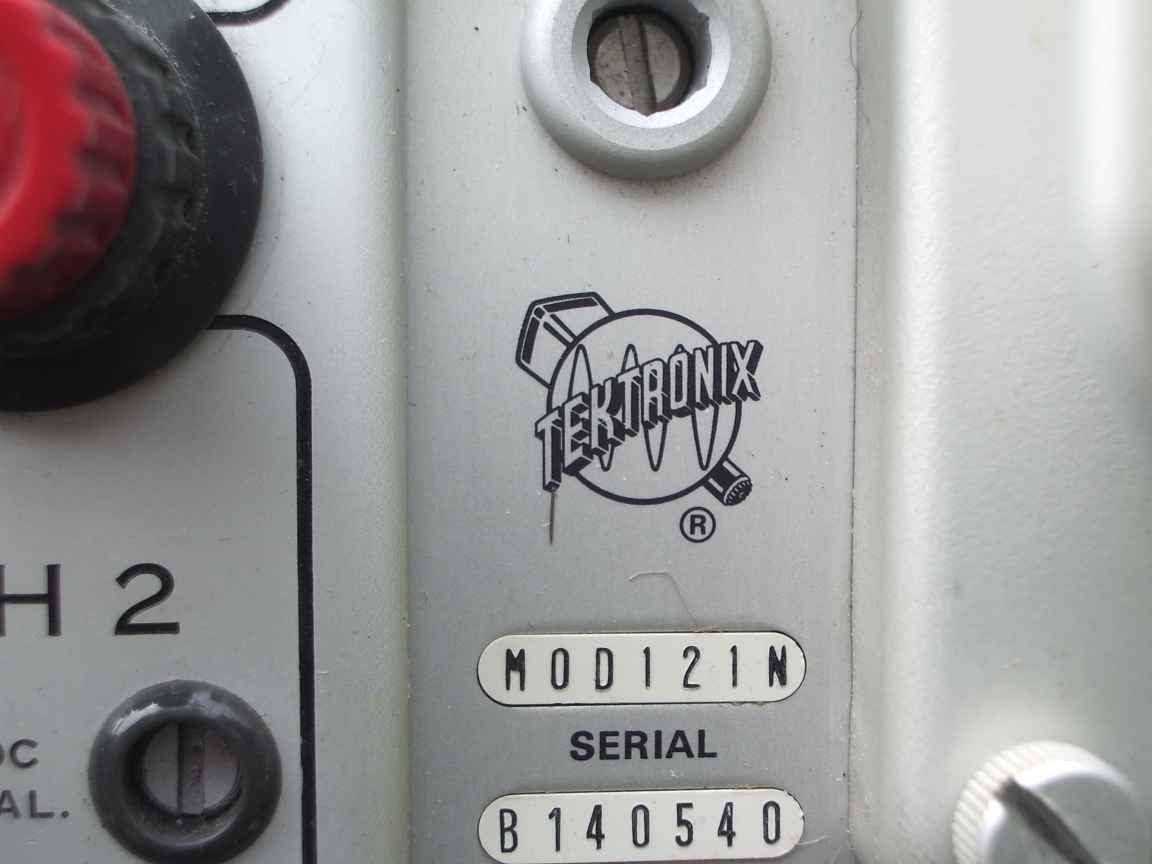
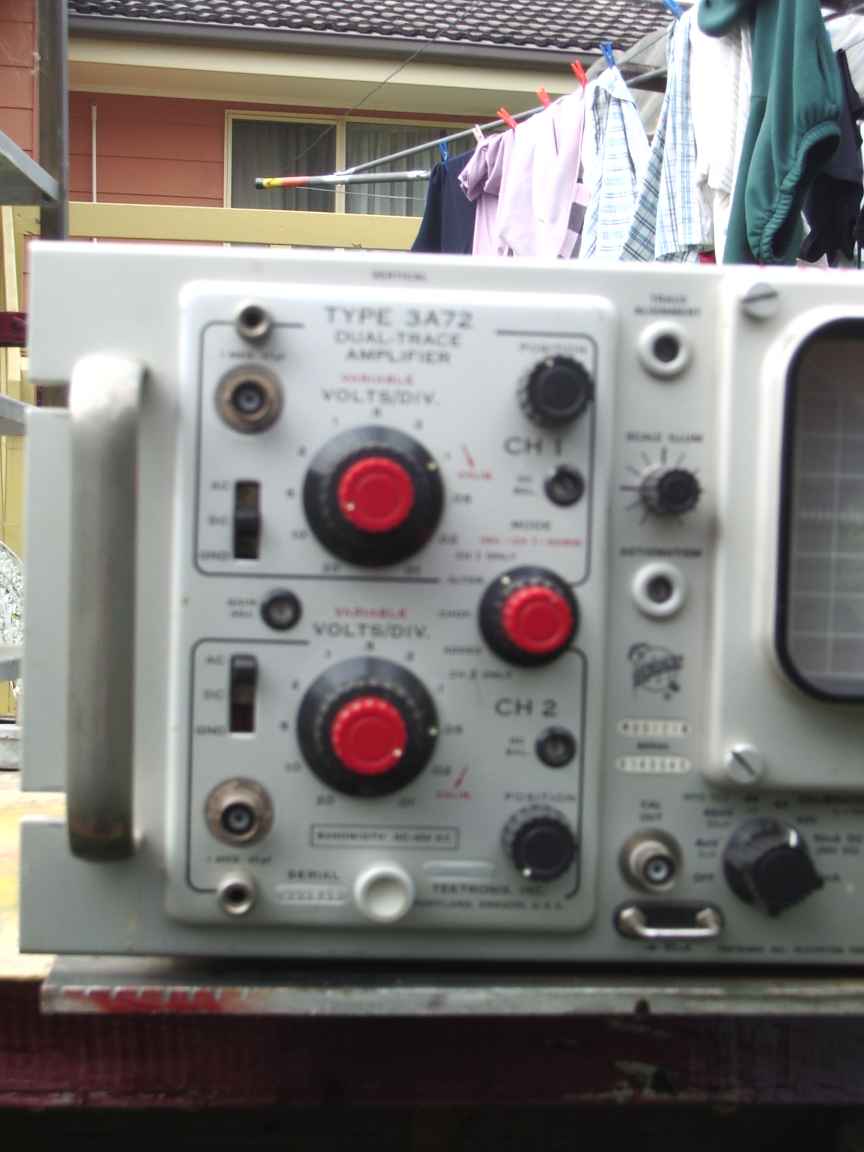
The washing was out and it was not raining !
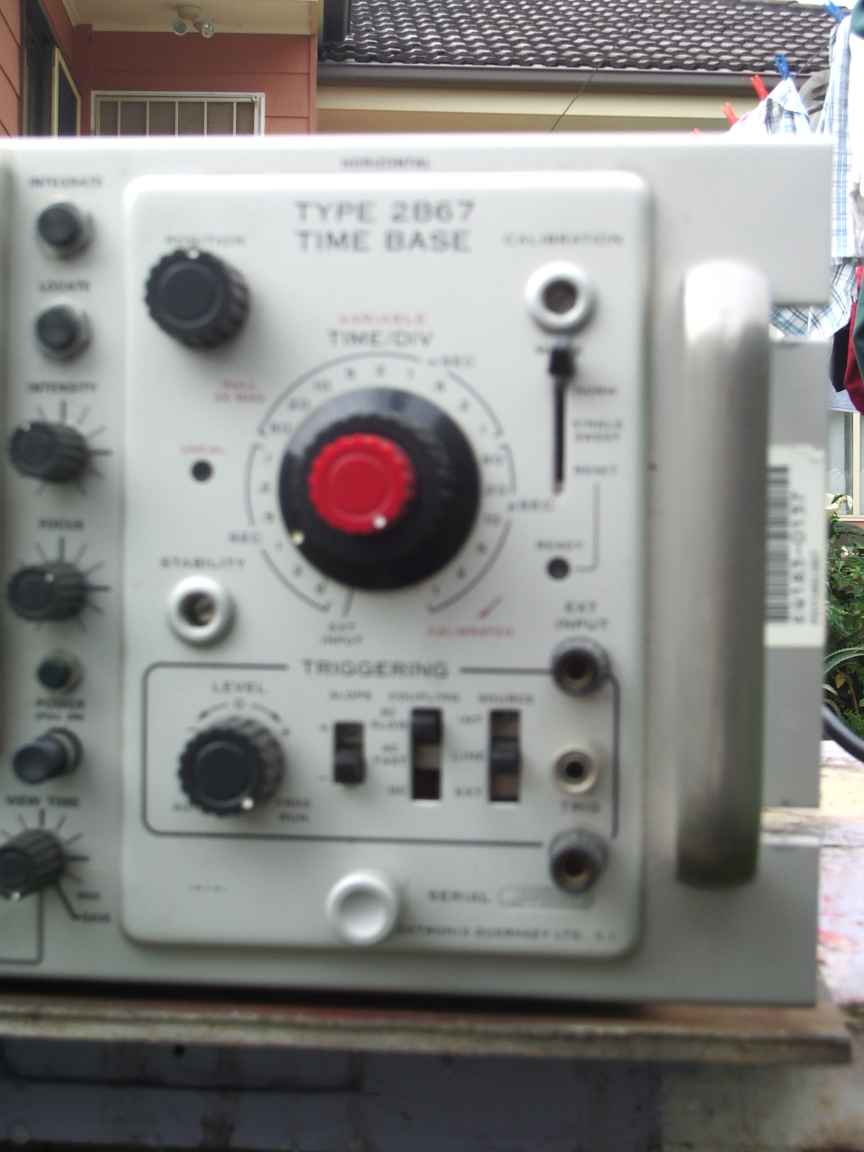
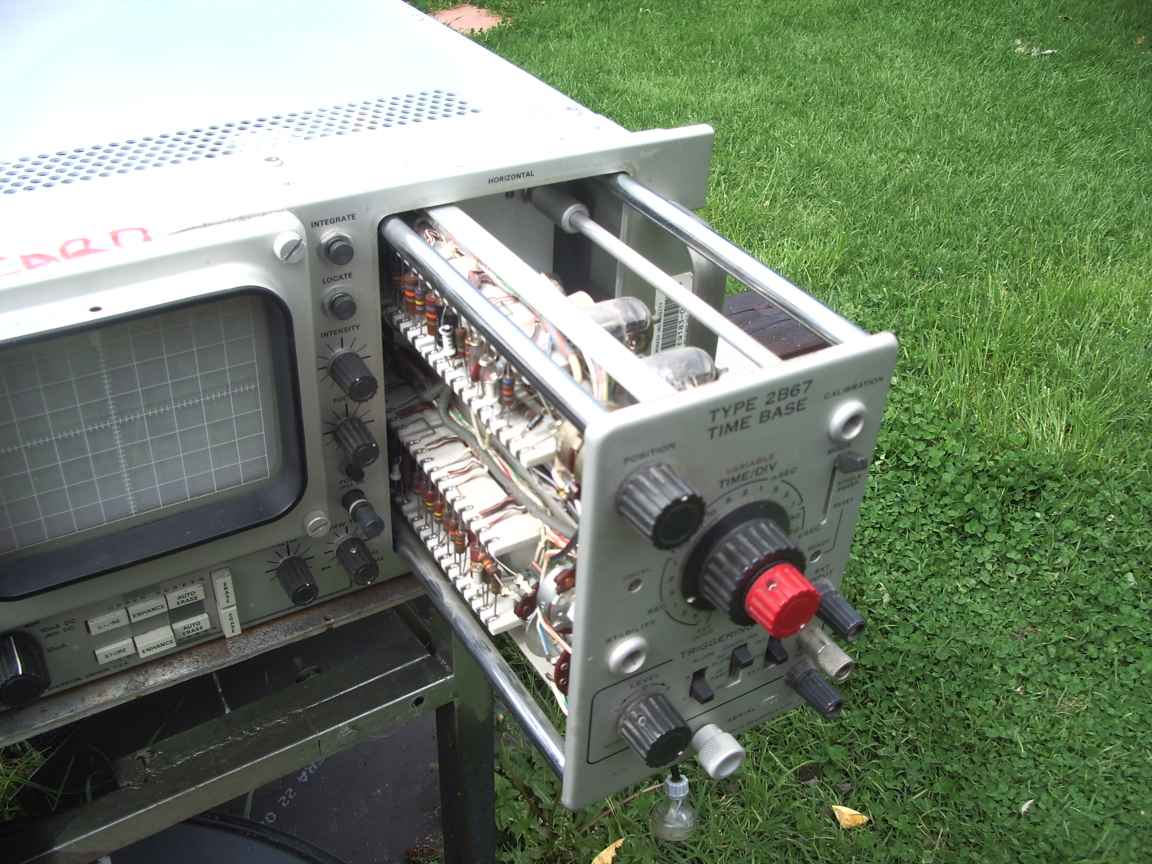
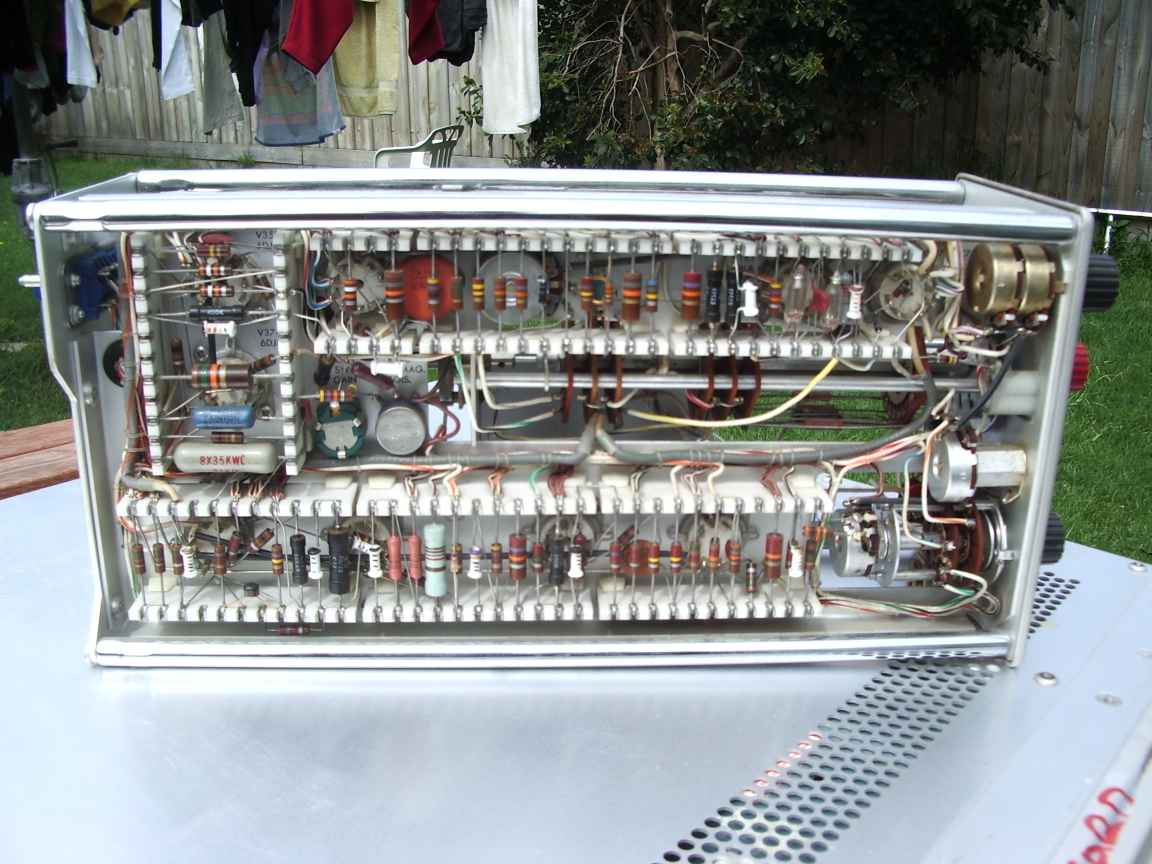
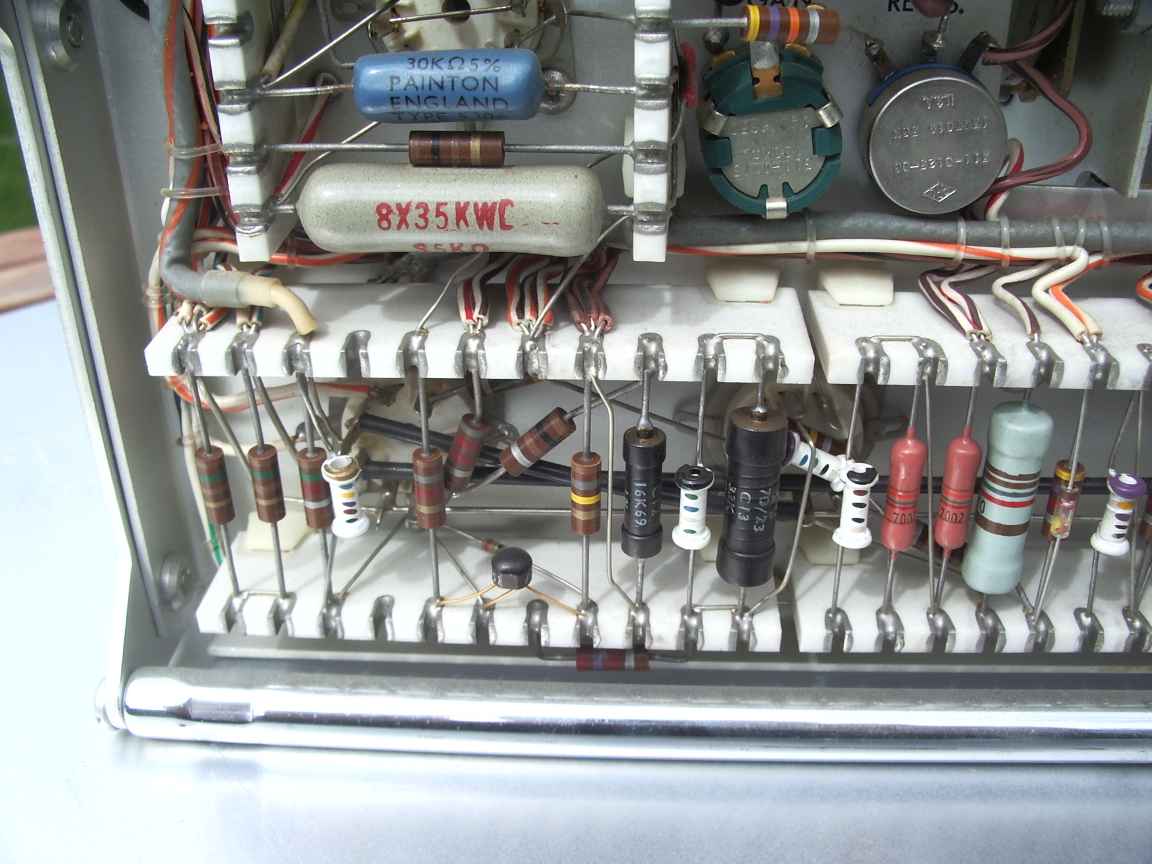
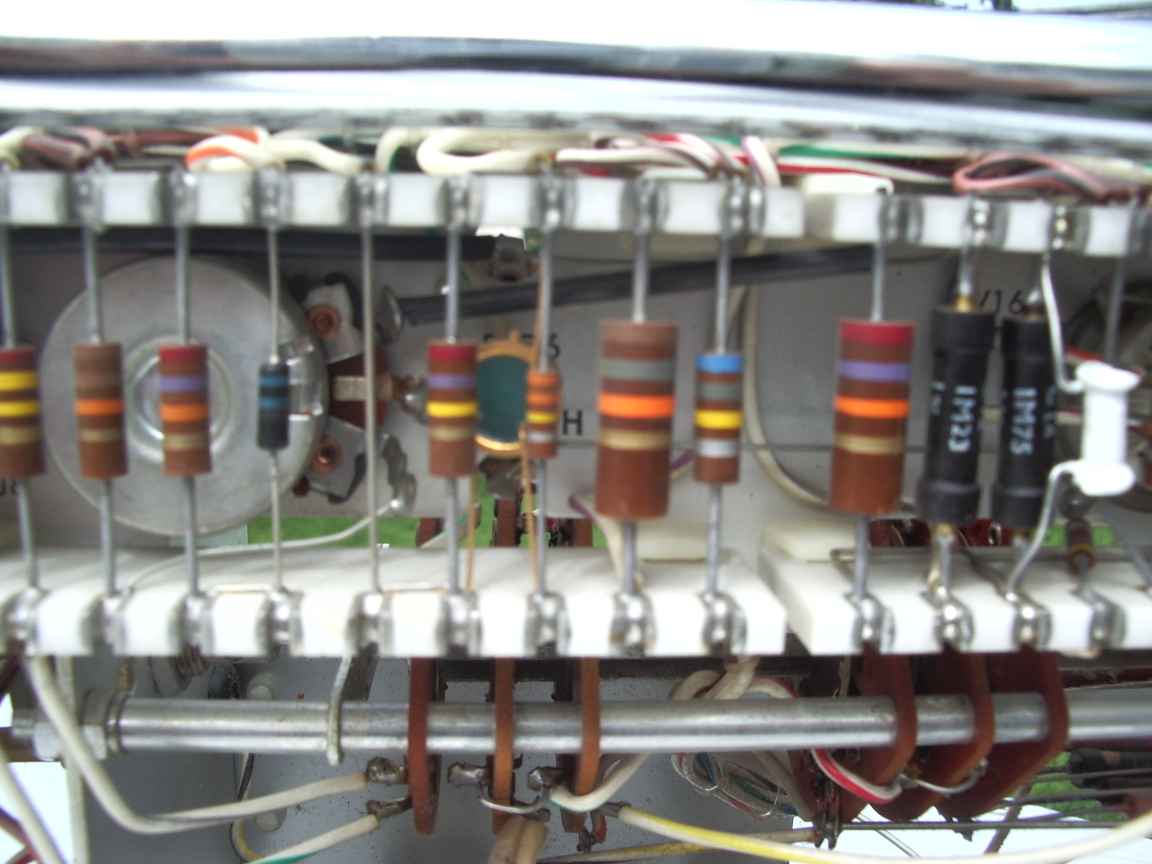
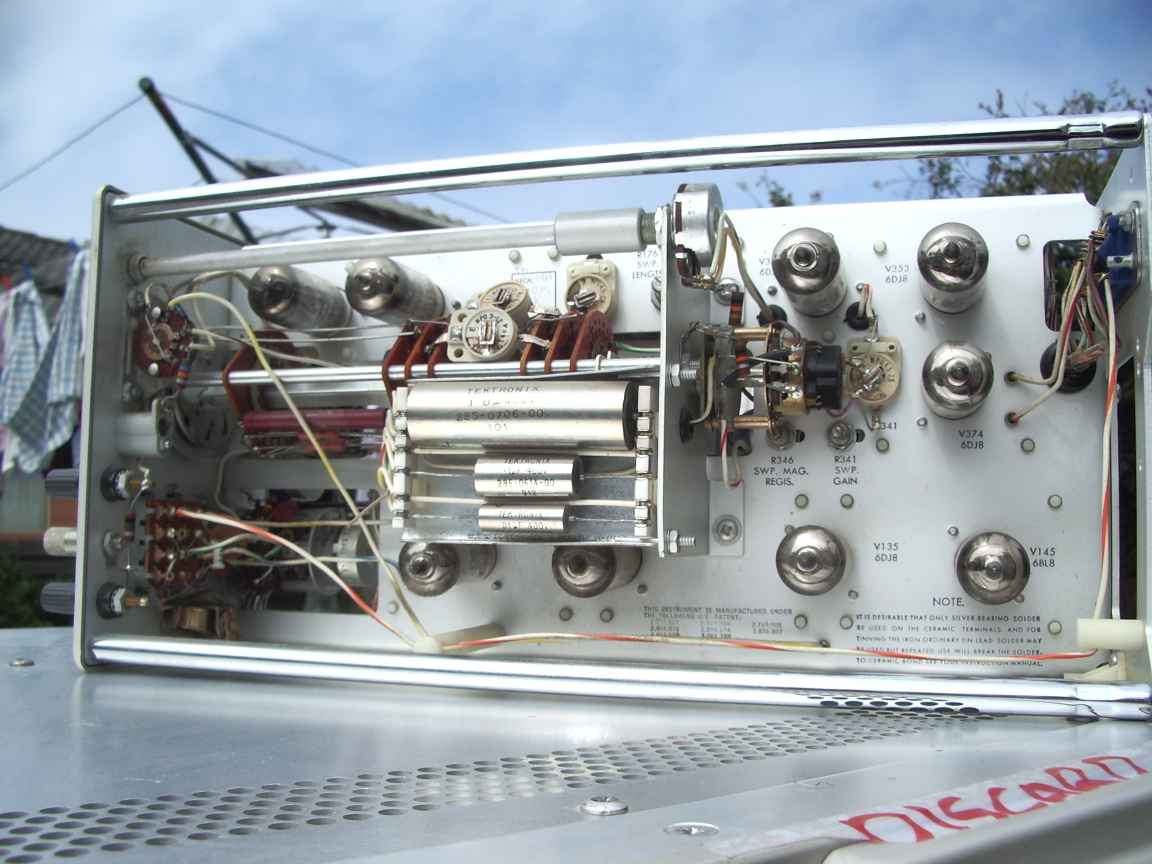
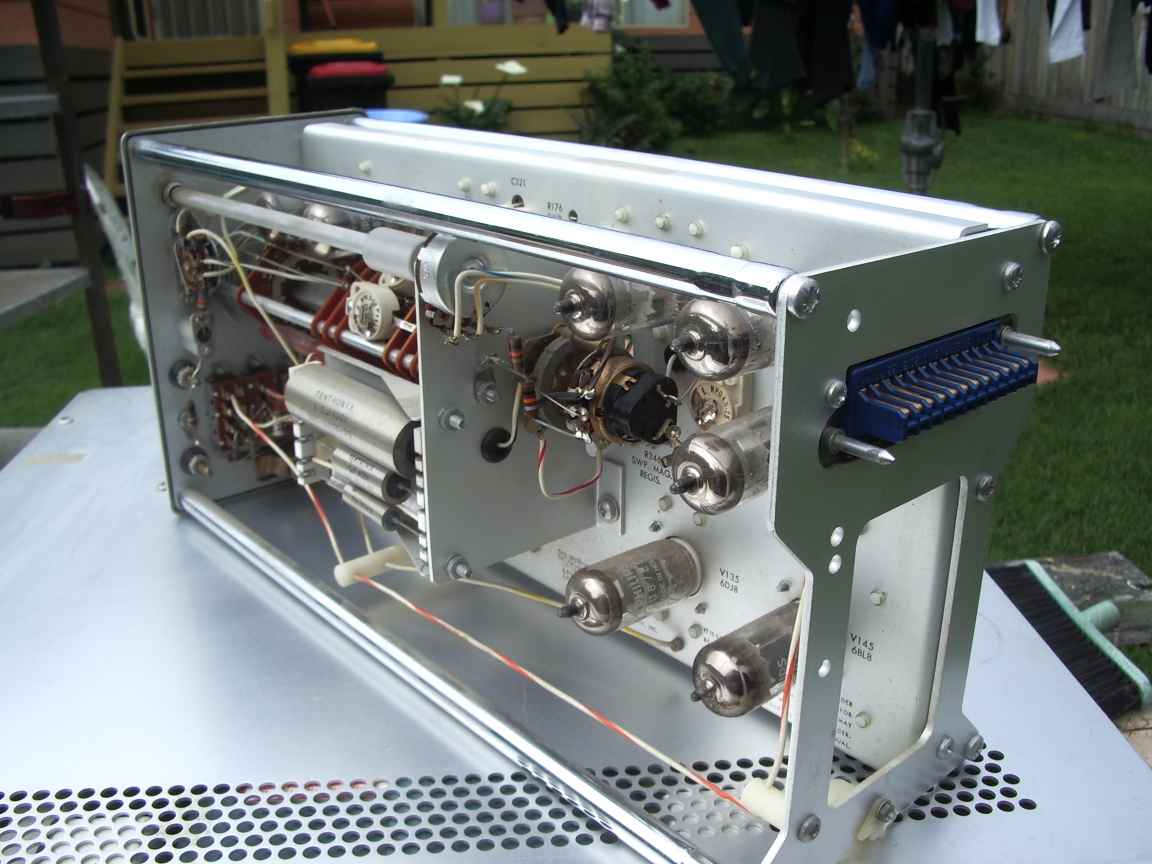
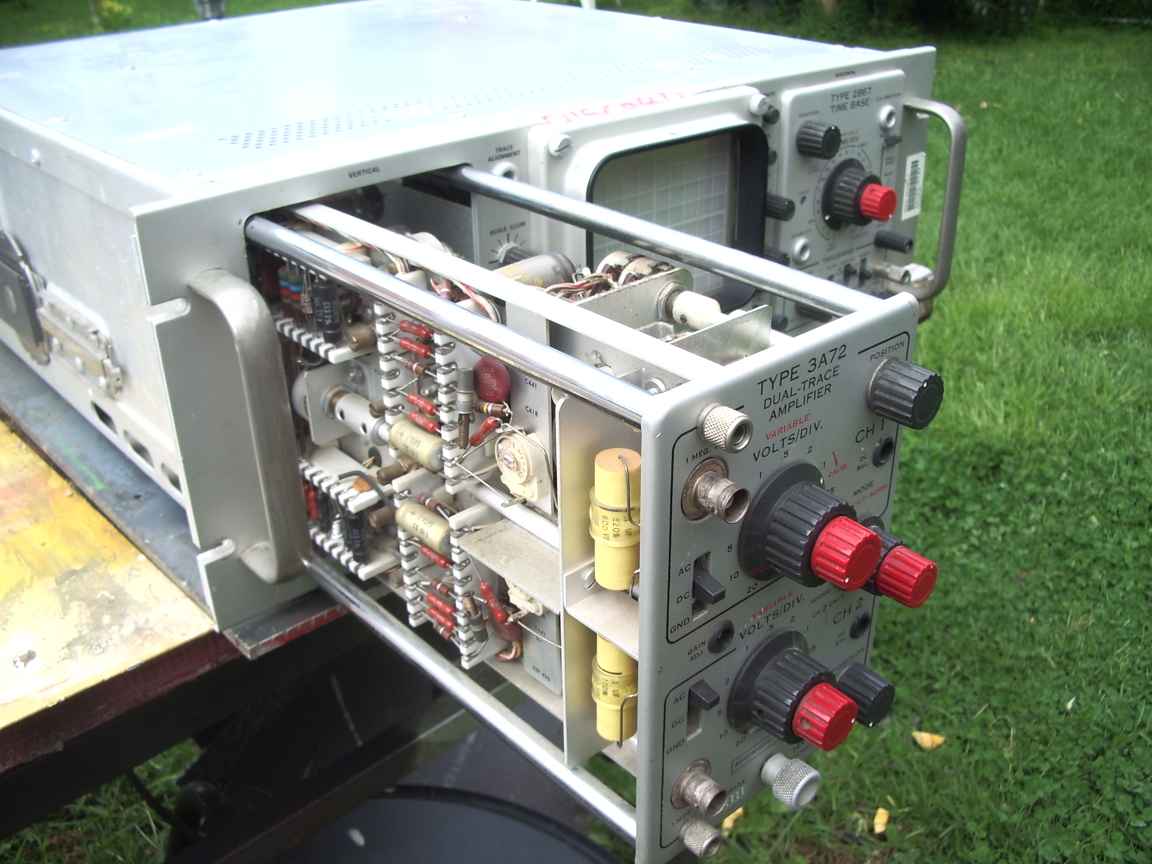
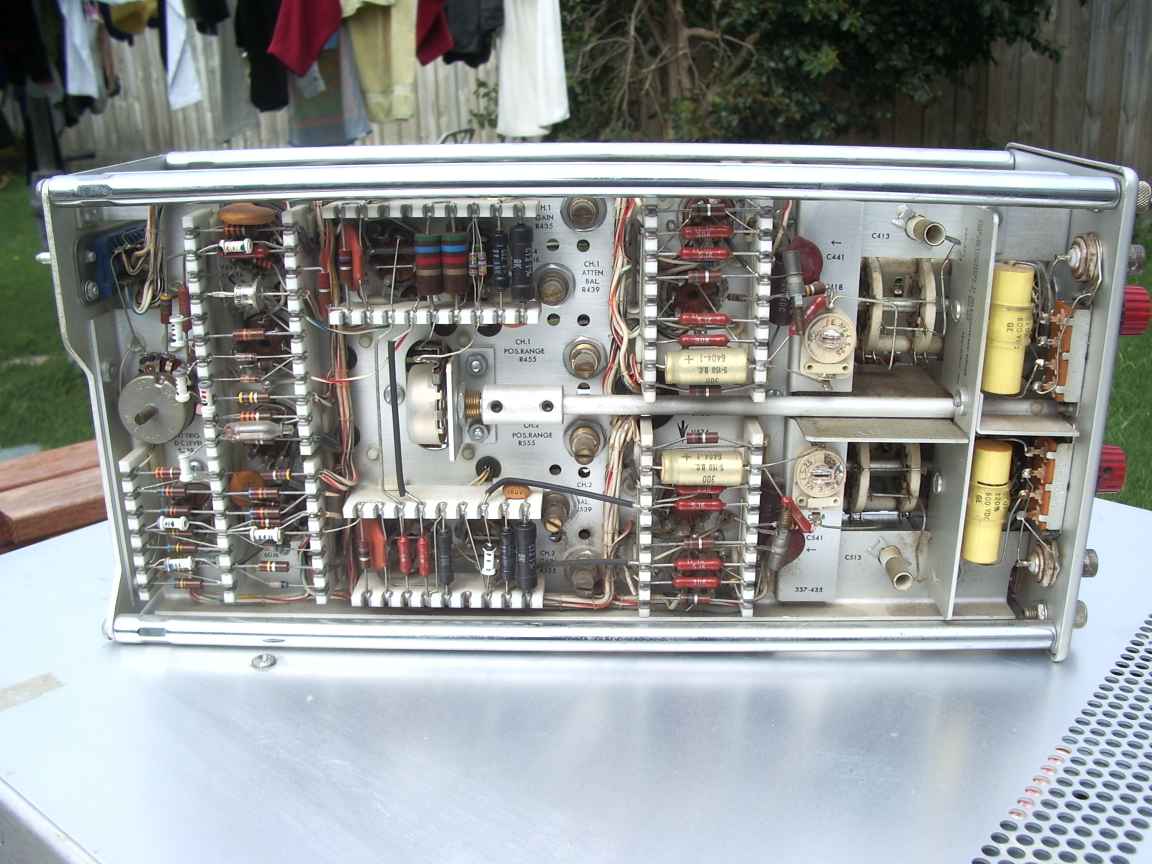
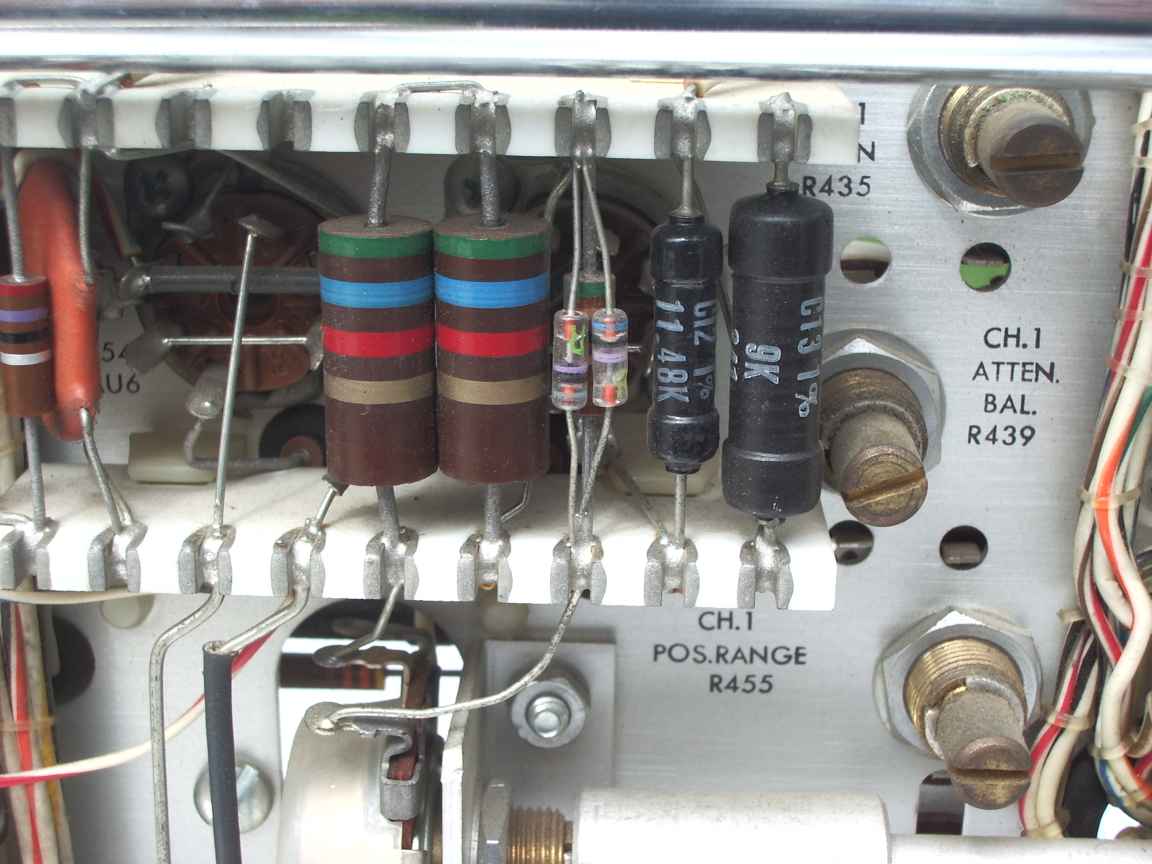
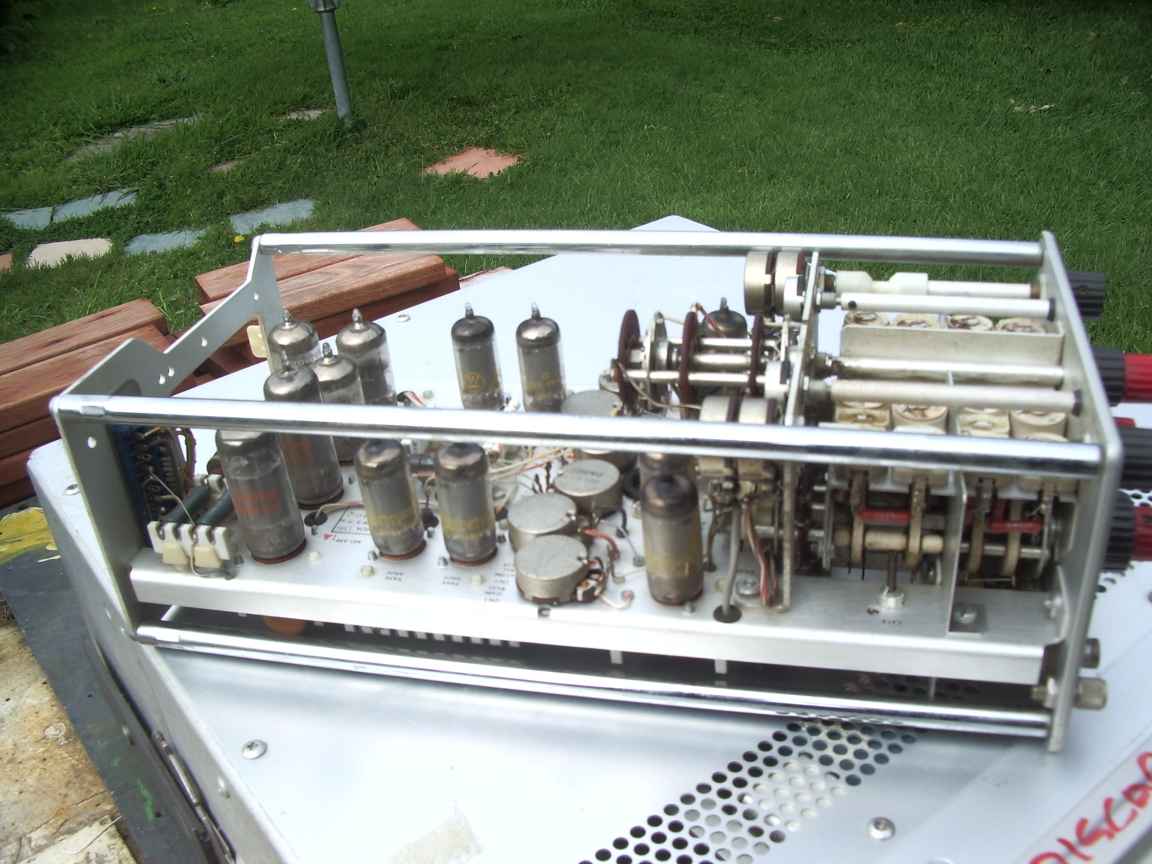
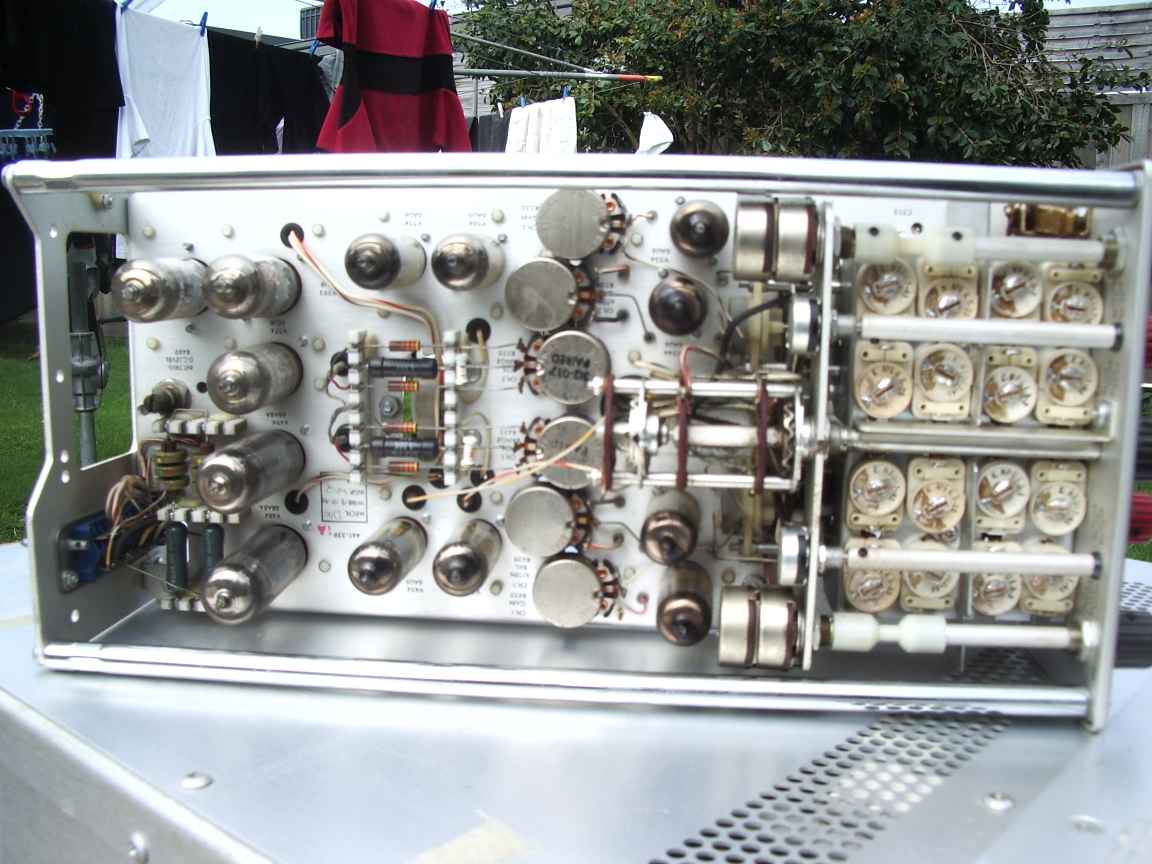
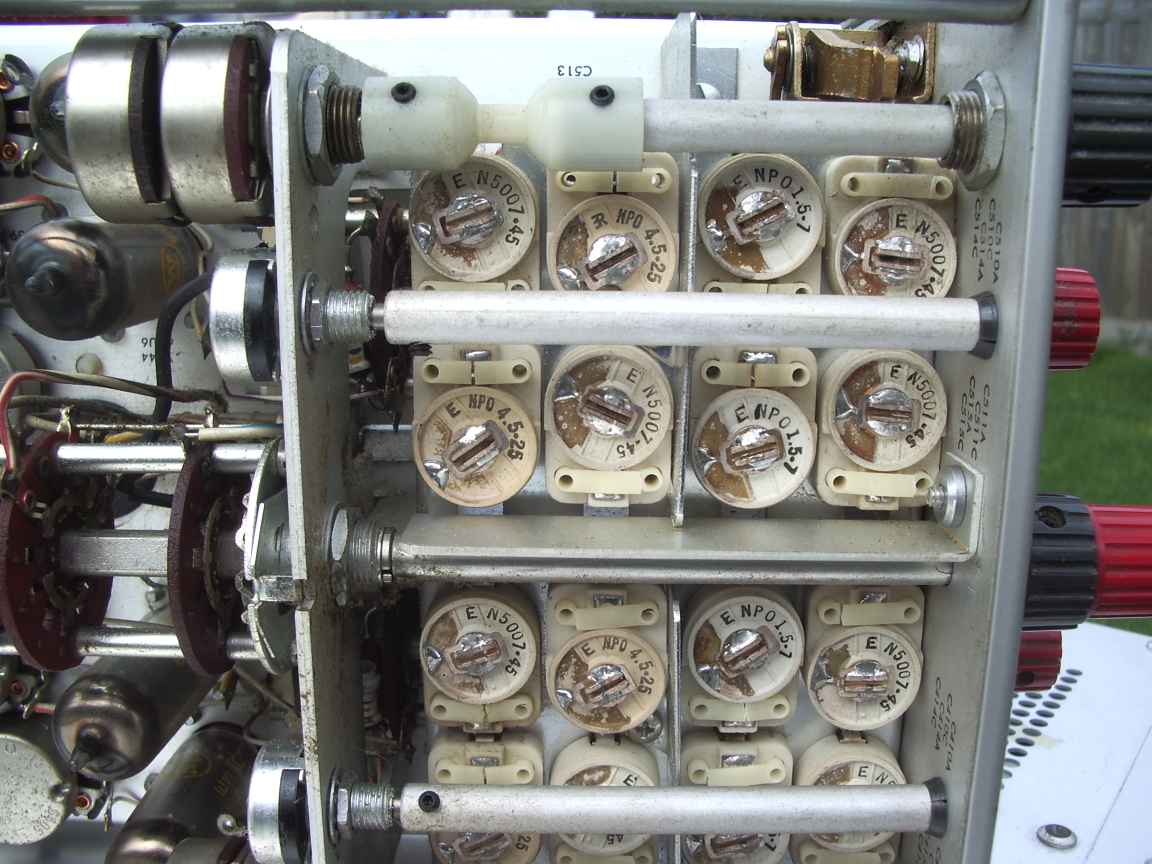
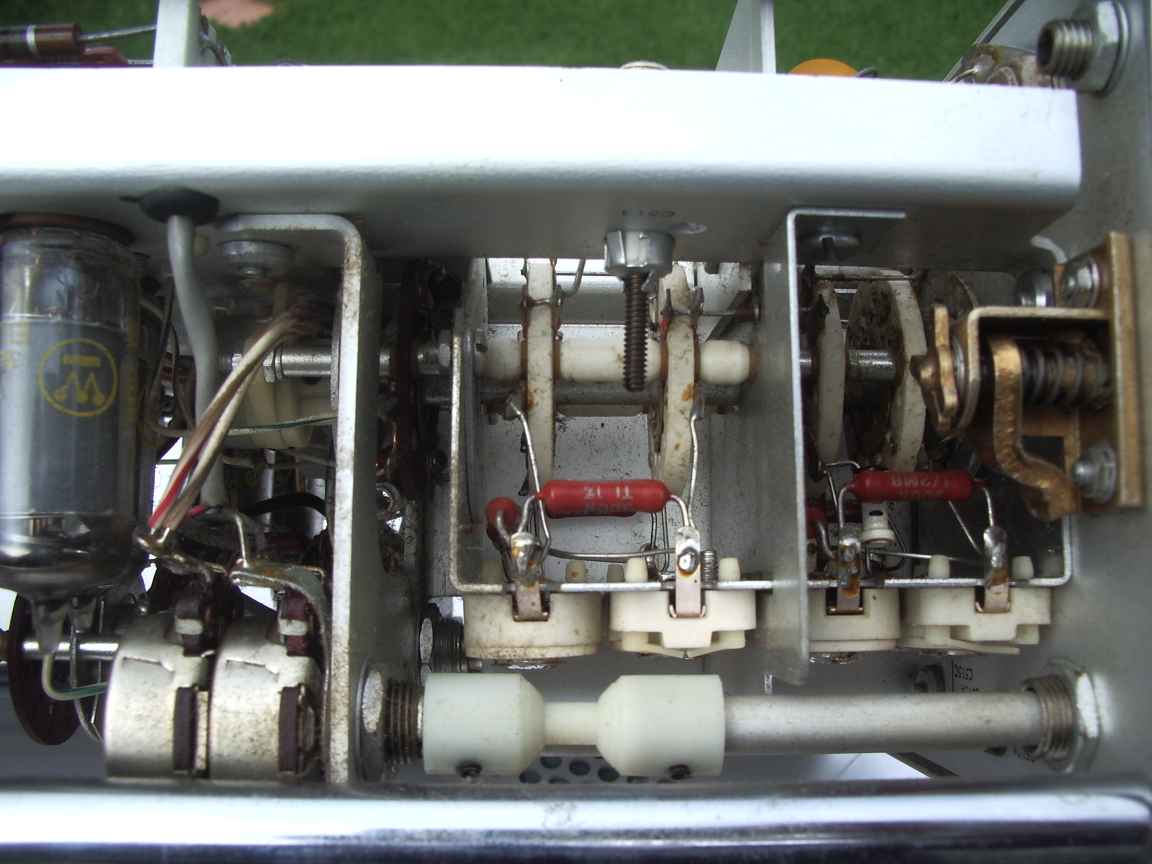
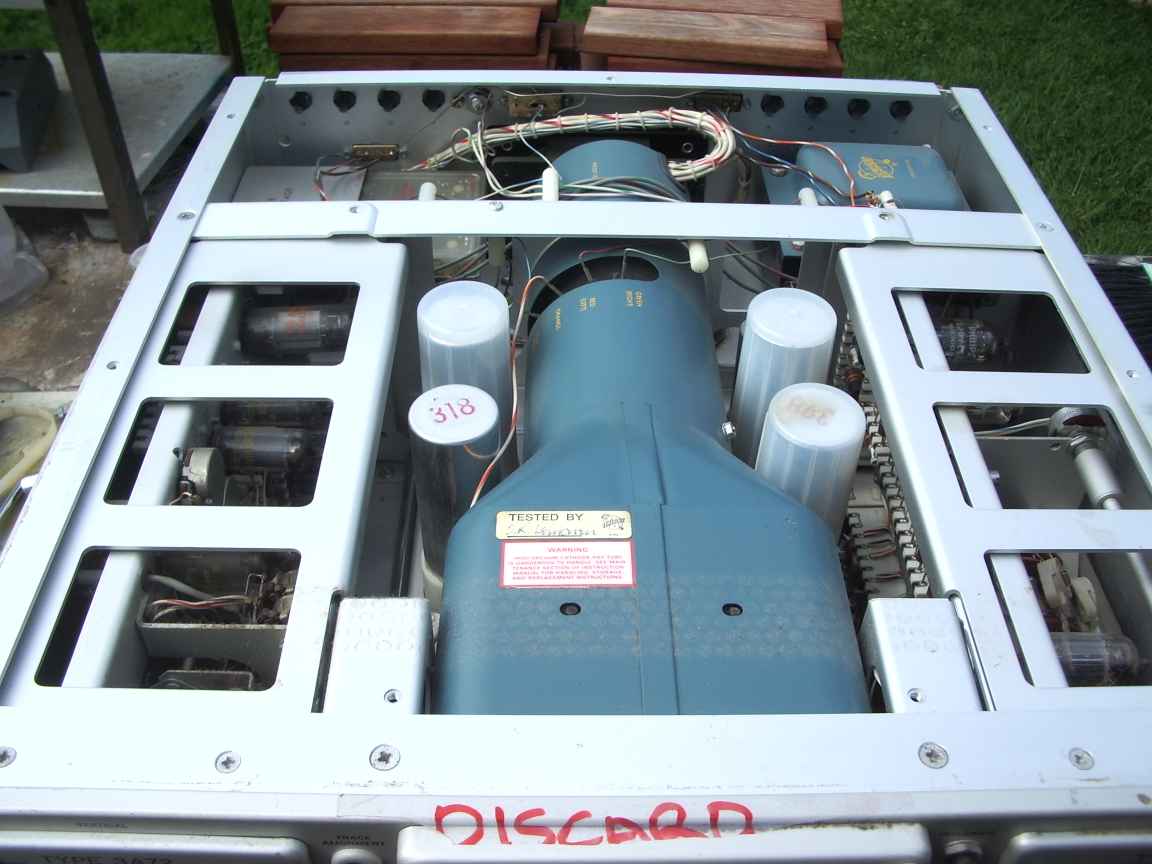
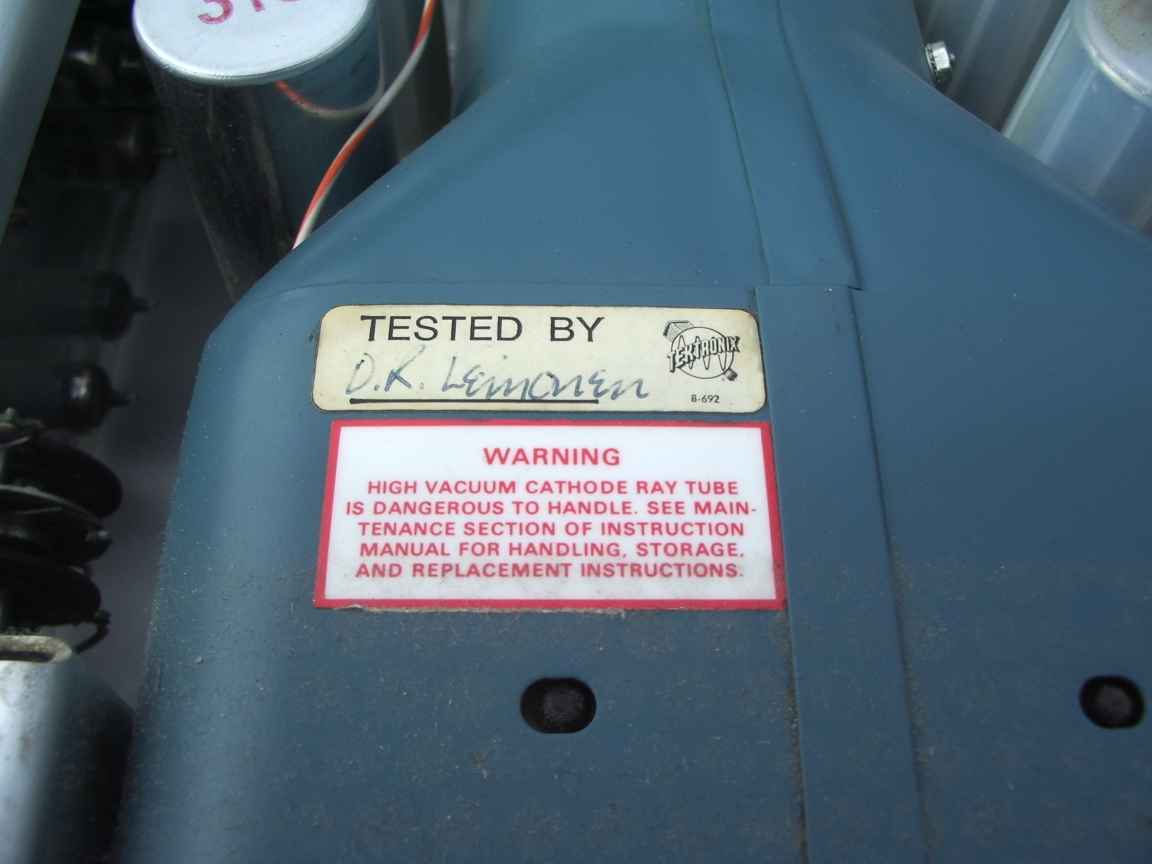
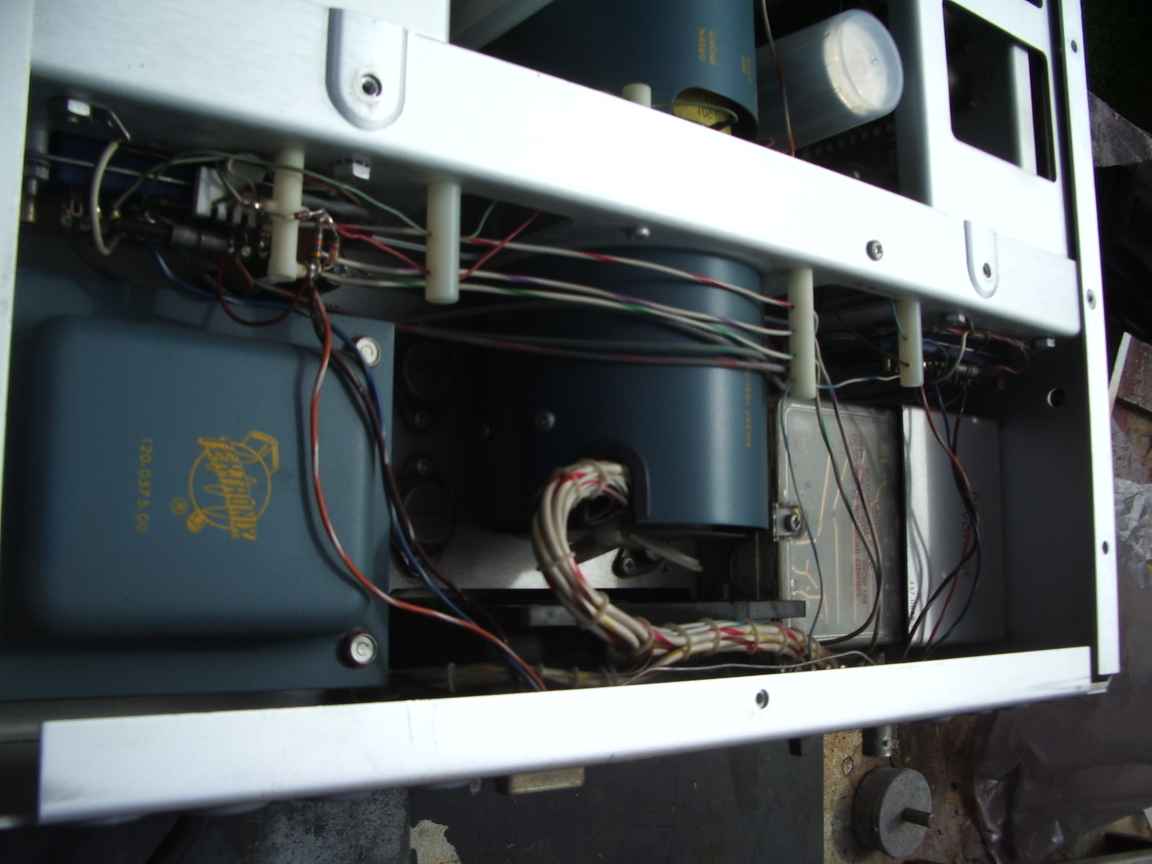
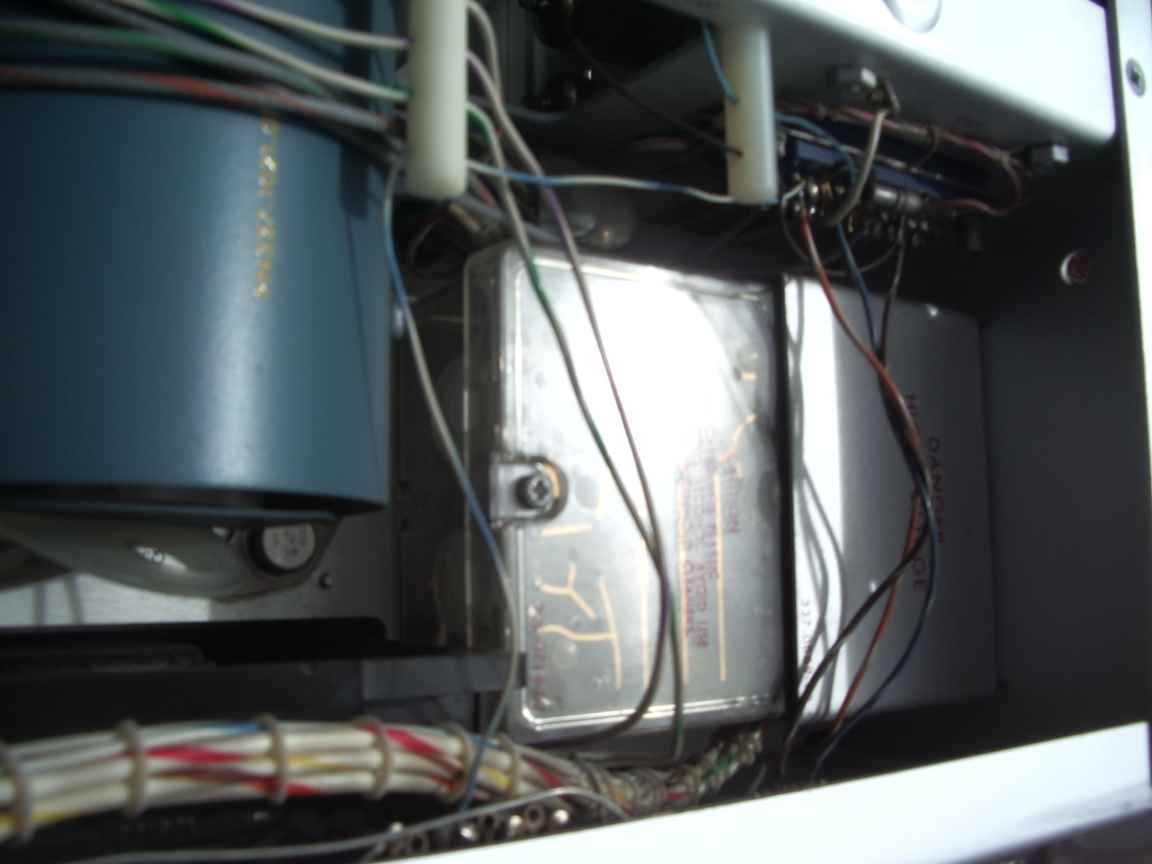
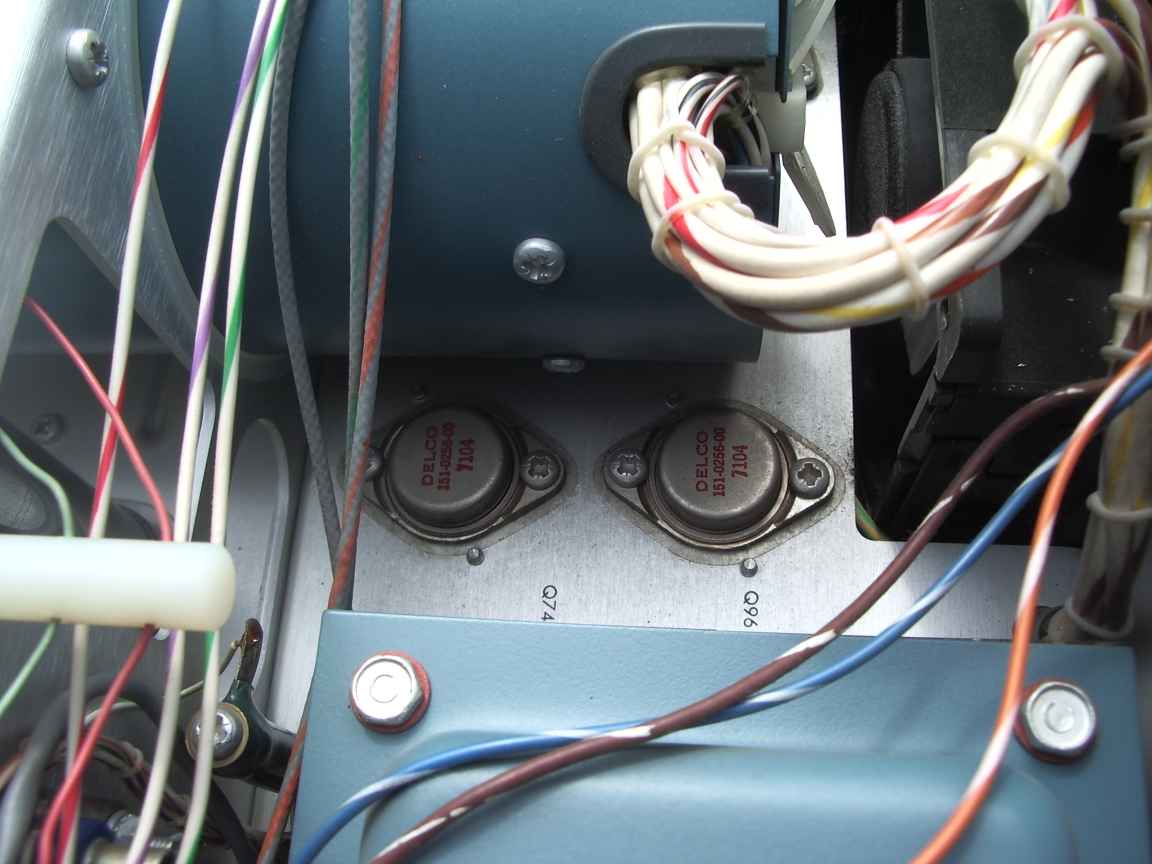
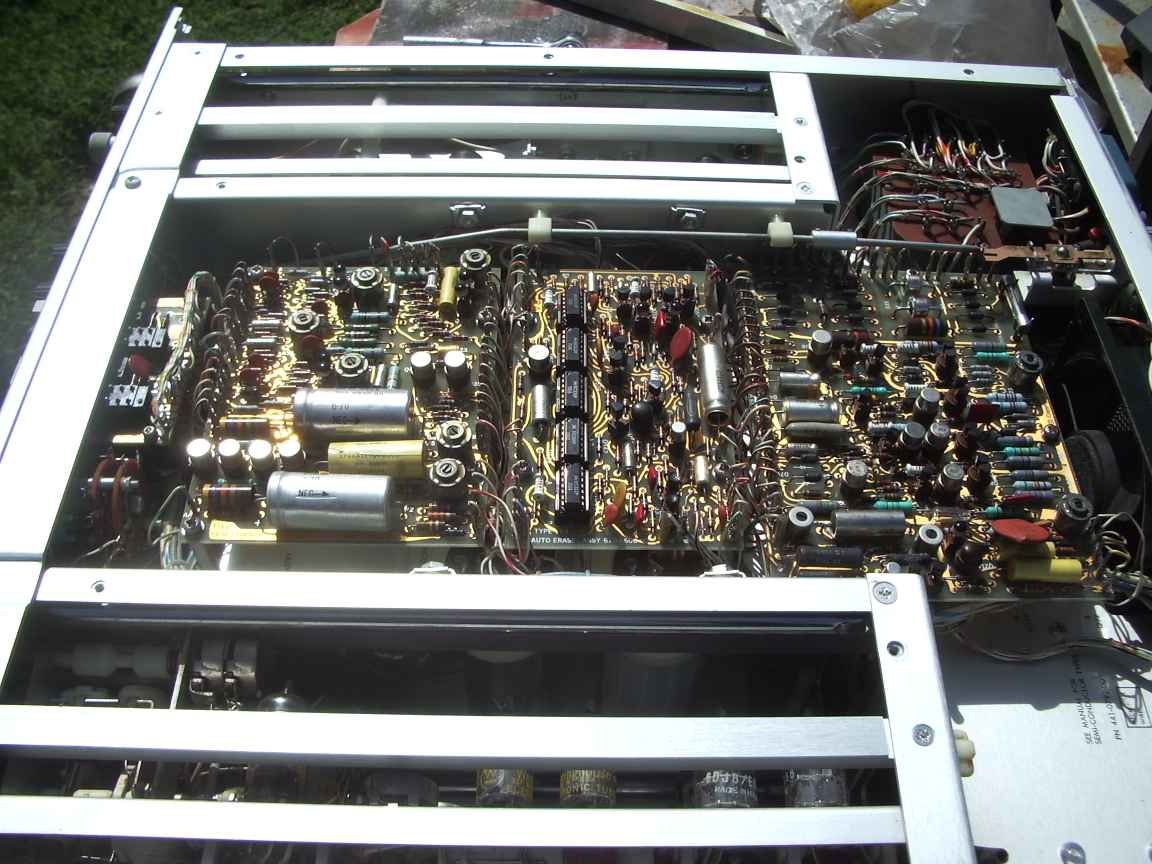

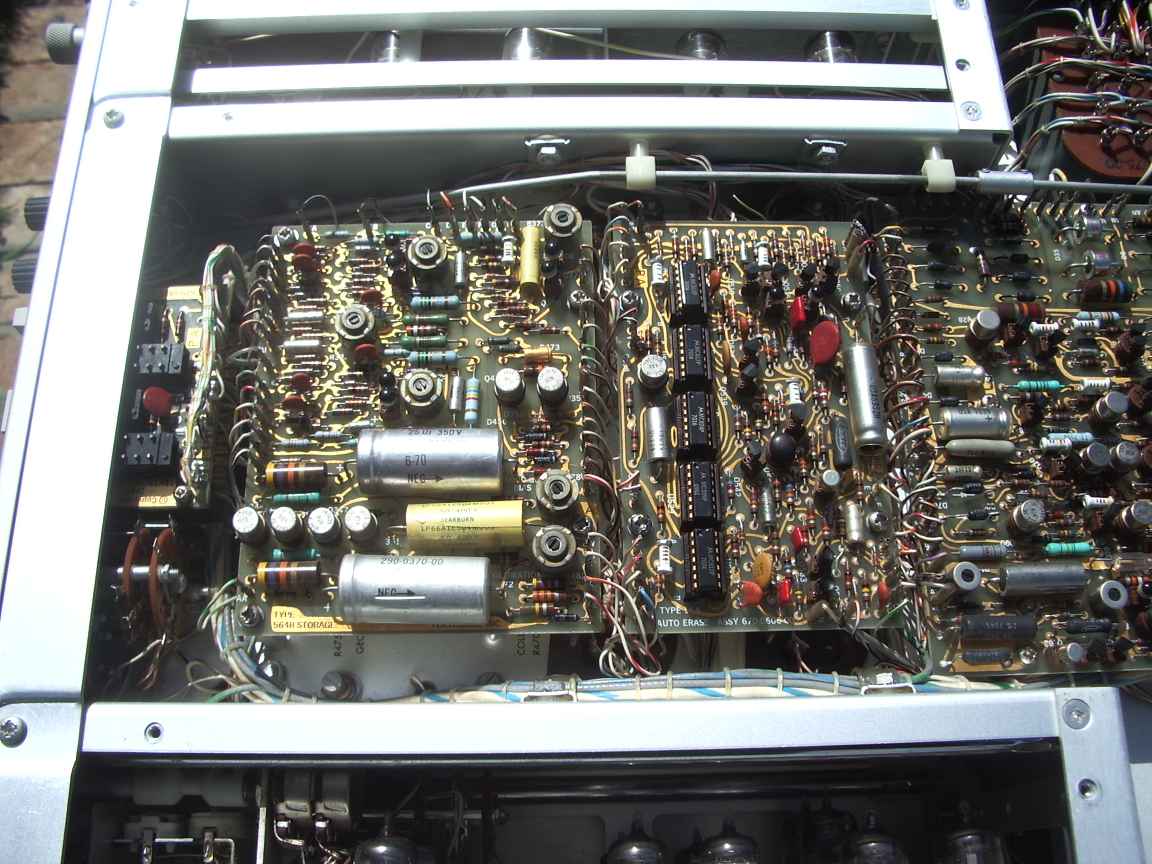
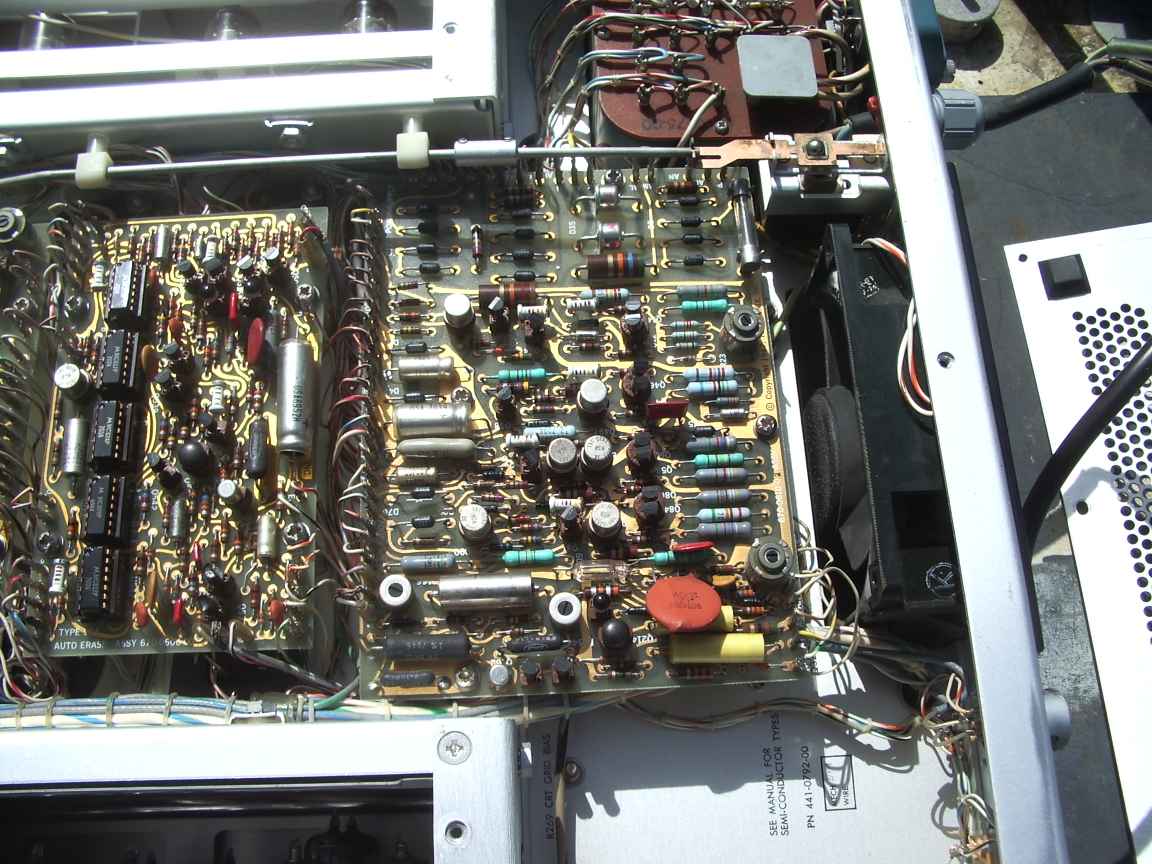
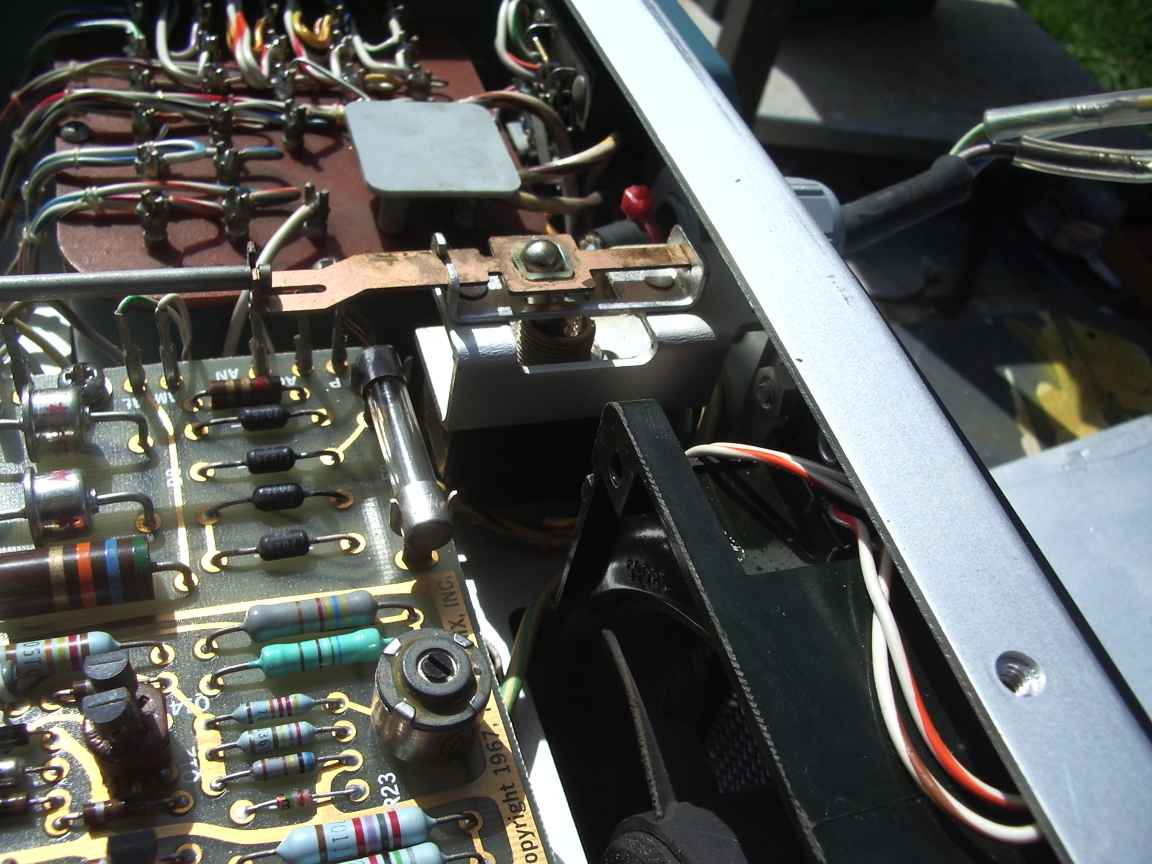

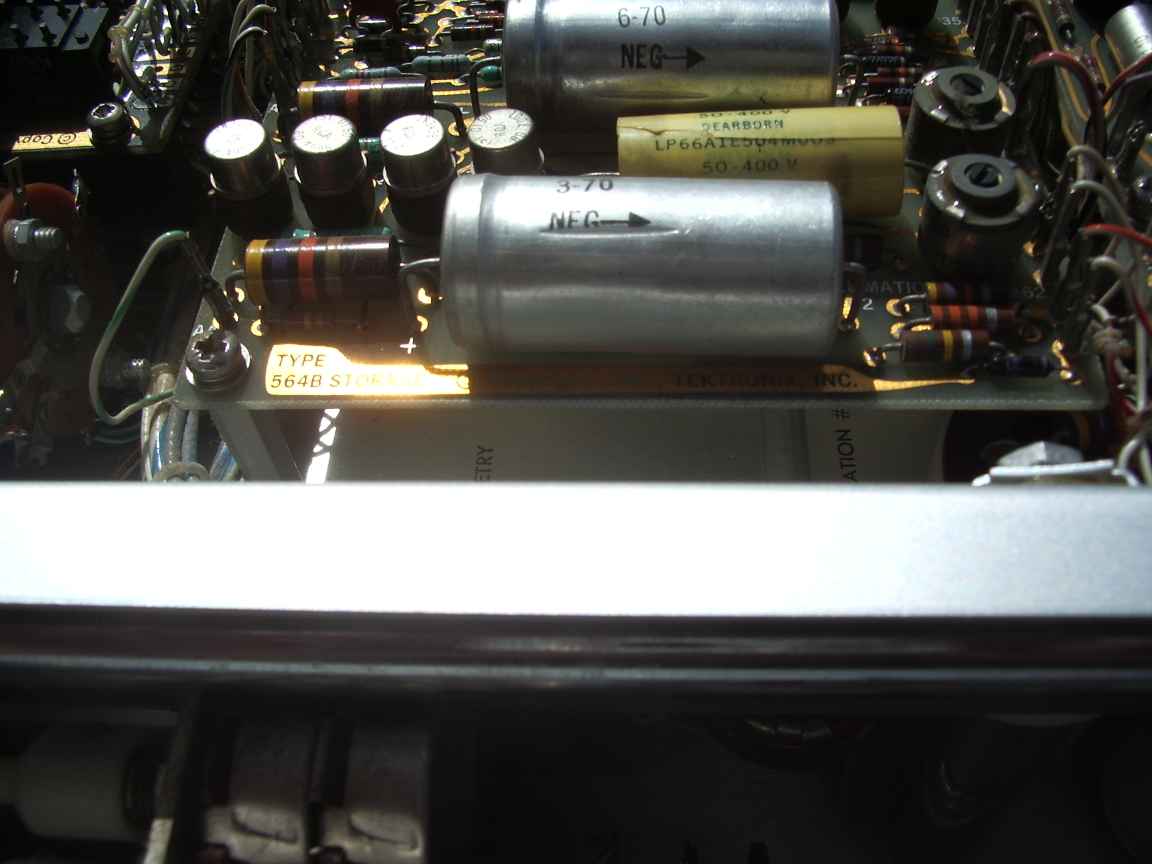
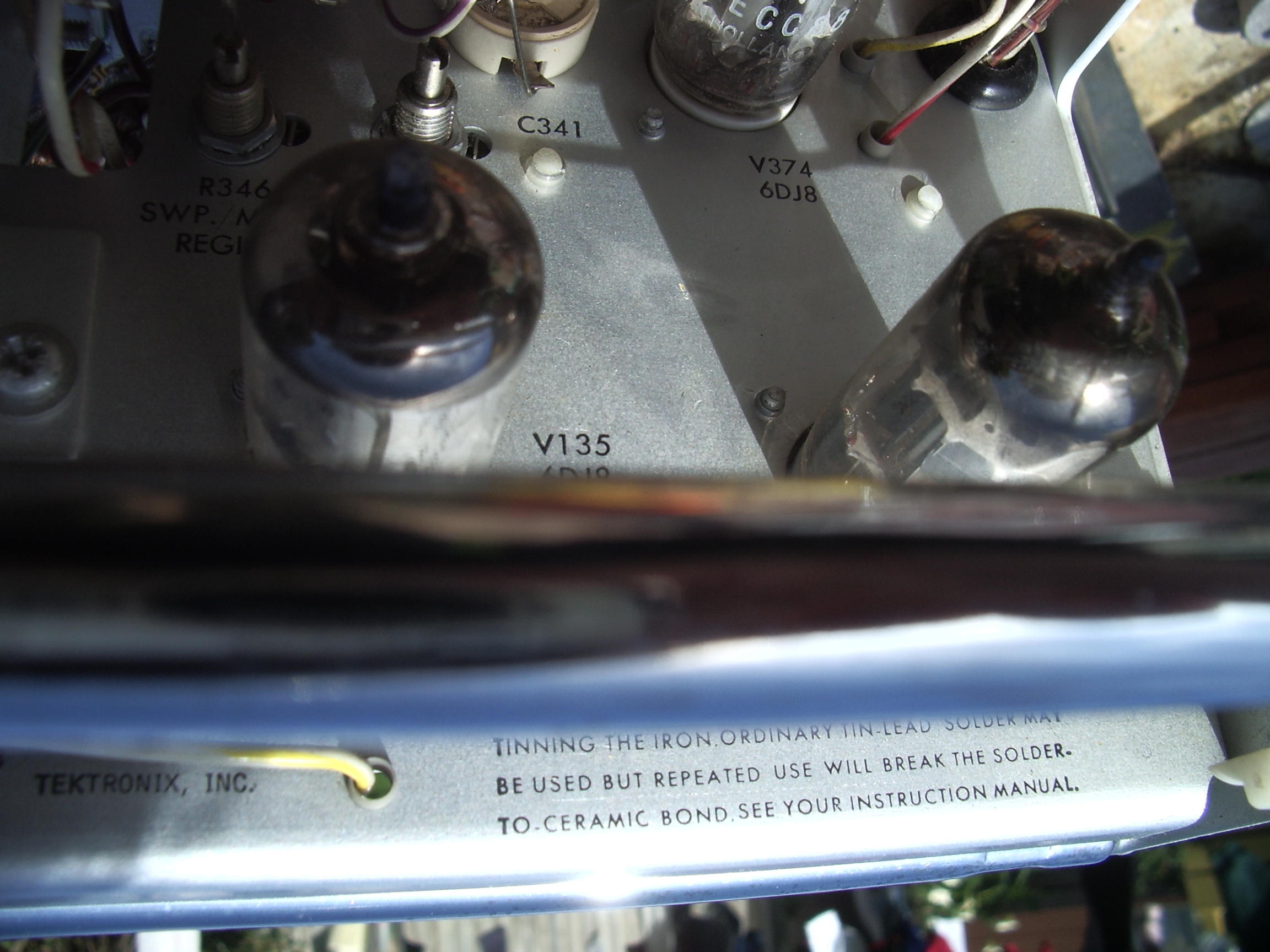
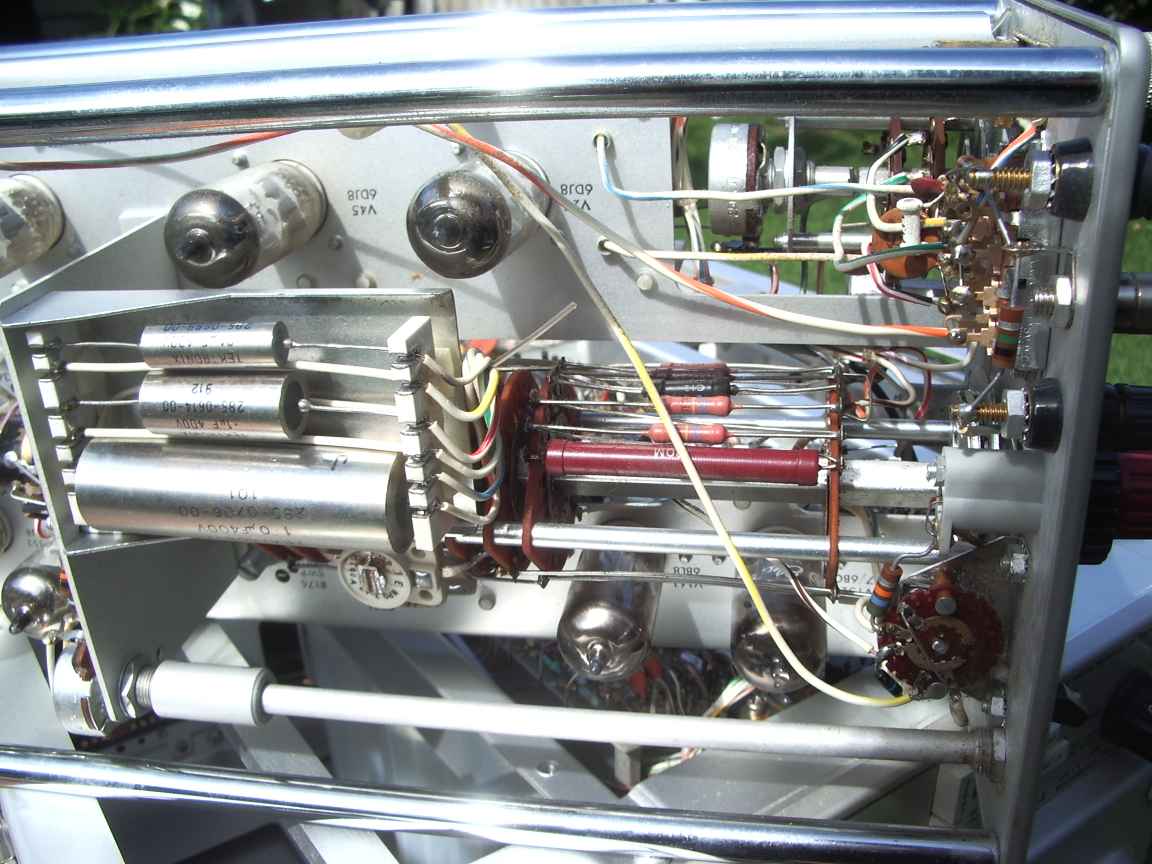
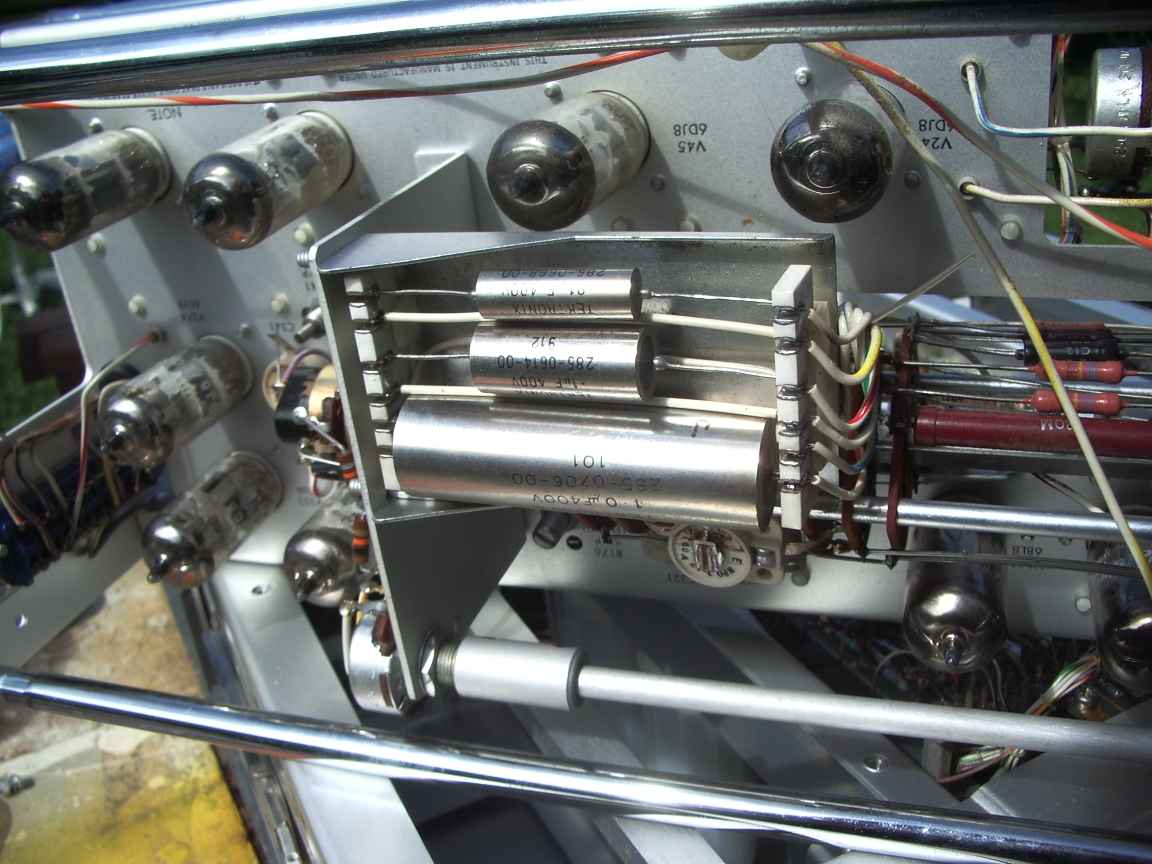
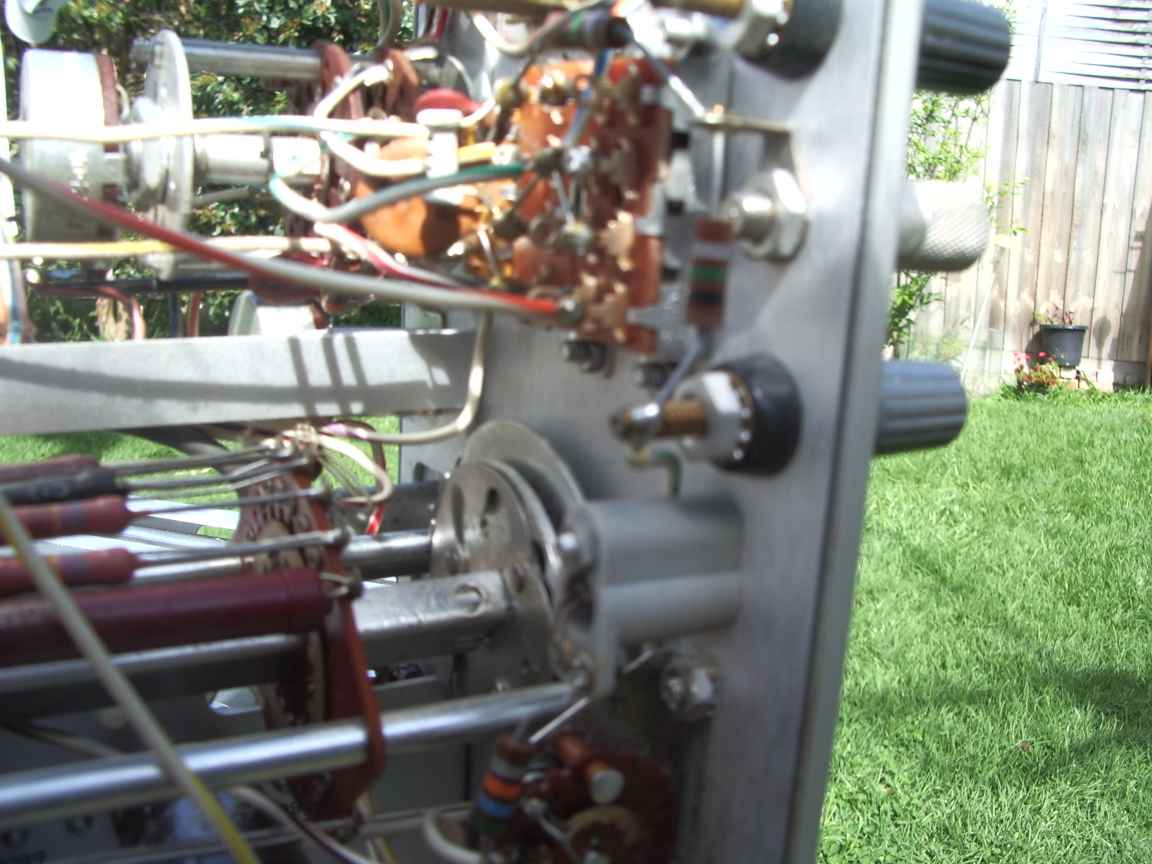
The Tektronix model 564 storage oscilloscope by Ralph Klimek October 2012 The scope was found on top of a pile of scrap metal that was about to be sent to the masher. I made big sad eyes at it and the nice man who was loading up the pile of metal said just take it and run. So run I did, or rather lurch clumsily along back to the car that was parked about 500 meters away. I think my arms are now 50cm longer than I remember them ! Why did I pick this unit up ? I do not yet own an analog storage scope. I do not know how the electron storage tube works, so what better excuse was there? It is a nice looking rack mount unit and despite the aluminium case and chassis is very heavy. The interior represents the best of the legendary skill and quality of Tektronix, which while superb in their own right, I think, still came runners up compared with HP. Your opinions may vary ! The unit is an interesting solid state and electron valve hybrid. The mainframe is entirely solid state, whilst the plugin timebase and vertical amplifier units are electron vacuum tube units. The mainframe was designed to utilize the large variety of plugins from other Tektronix series scopes. My vertical amplifier plugin only has 1Mhz bandwidth which is a bit disappointing. Maybe the Gods o' Cargoe will let me have the 5Mhz plugin one day ! The previous owners of the unit had thoughtfully cut off the power cord to prevent tinkerers like me from from getting zapped and the flow-on legal hassles. The unit had been stored in a clean dust free location, and even though it looked as if it had not been used for 30 years, the interior was remarkable free of vermin and dust. Tektronix believed in having ventilation holes at the top of their instruments, permitting dust, liquid and vermin entry. There was some evidence of dust ingress , but not enough to condemn this unit to landfill. Befor powering on, to see if there was still signs of life, I did the following. All valves were removed from their sockets and reseated. All transistors, which were also all socketed, were reseated. All pots got a squirt of electrical solvent and fully tweaked a couple of times, but off course, after marking their setting ! I have learned that quality components made in the sixties generally do not deteriorate. Things were overengineered back then. There was no reason to suppose that this unit would not work or leak smoke. You would be suprprised to learn just how reliable electron vacuum tubes were, if run at their thermal specification. They are almost never to blame for equipment shortcomings, it will be something else. I was not wrong. It just worked. One channel of the vertical amplifier has intermittant issues with the input attenuator switch, this being due to dust ingress from the top ventilation holes. Even so, this is quite an achievement for equipment of this age. The PCBs in the mainframe unit are dated 1967. I was in school then, grade 2 just learning to read a bit. The plugins are even older and would be late fifties vintage. It is amazing that the storage tube still works as well as it does. A captured trace remains clearly visible for over an hour. Time to read the manual and learn how electrostatic storage tubes work. The other thing I did, before powering on I checked the resistance of all resistors. After 50 years, composition resistors can drift high in value. Nothing was out of specification. They knew how to make reliable components back then, a skill that would appear to be now lost. |